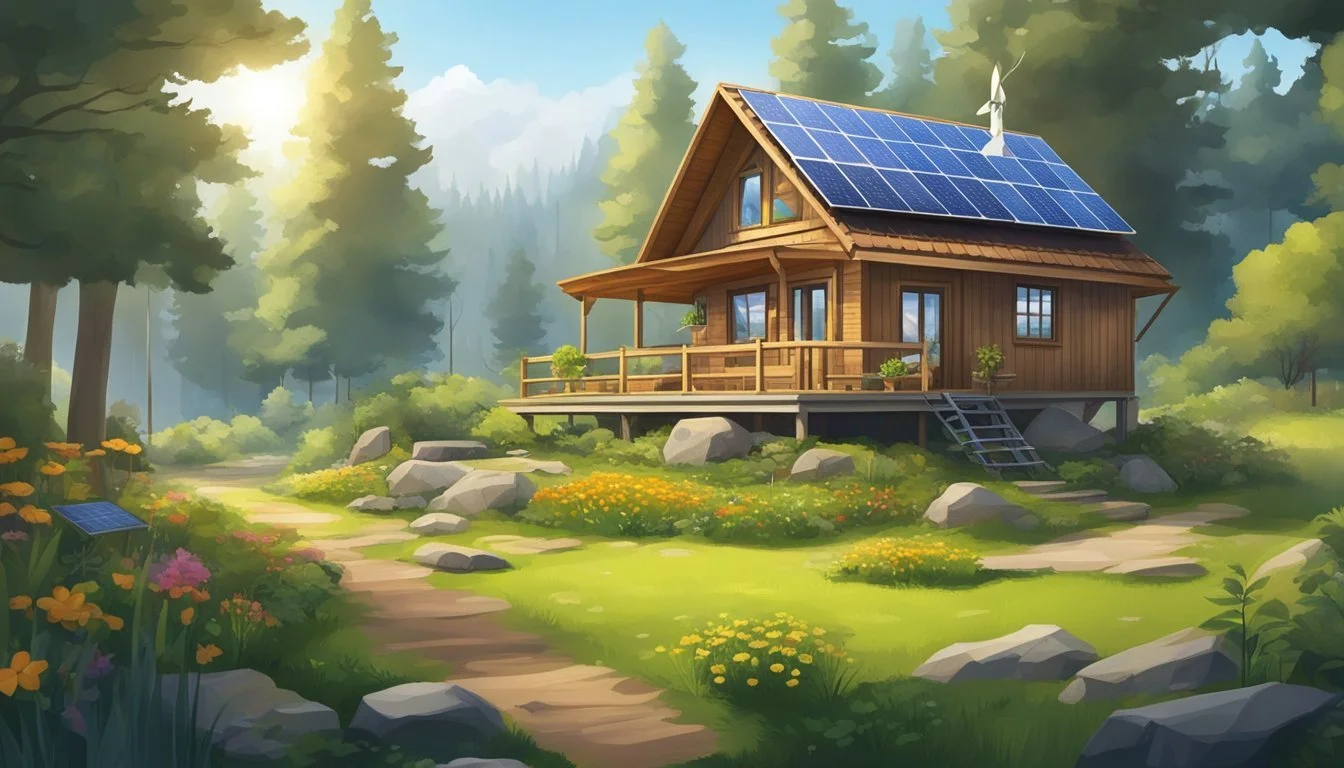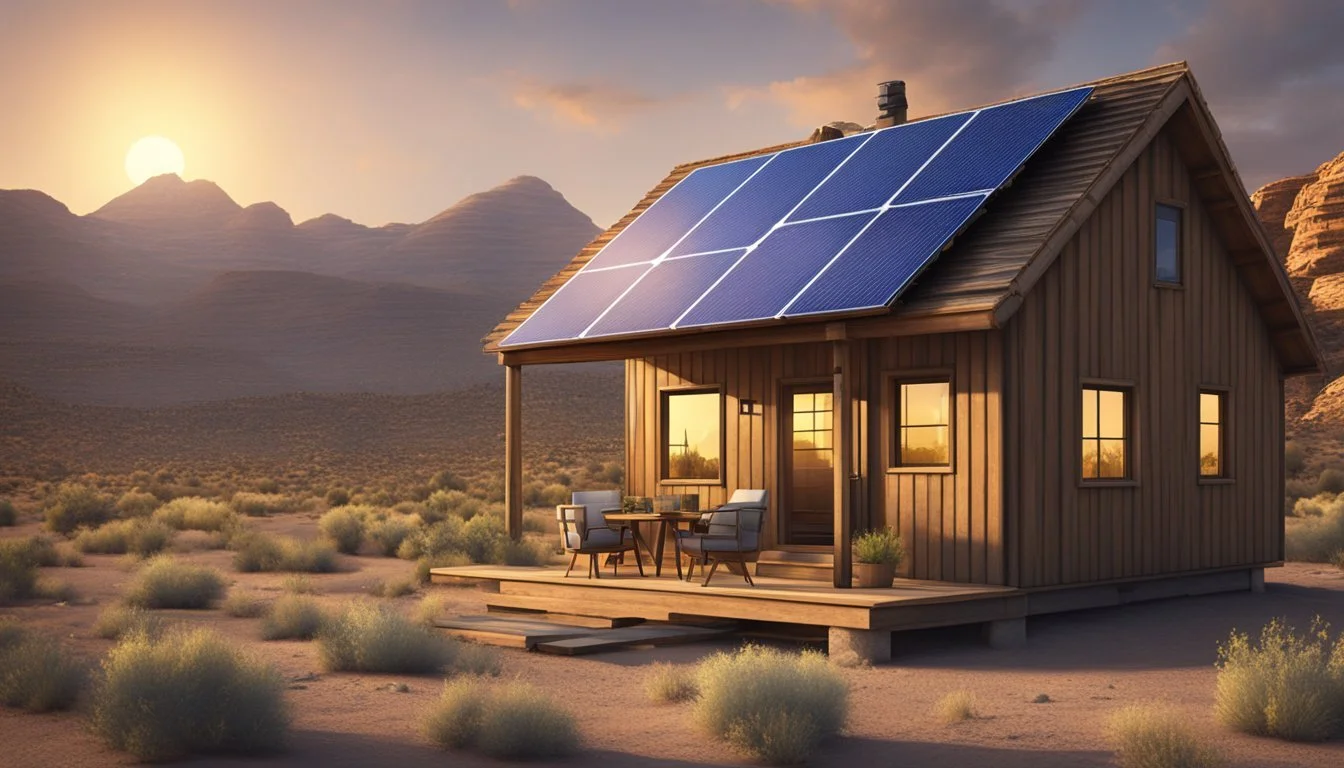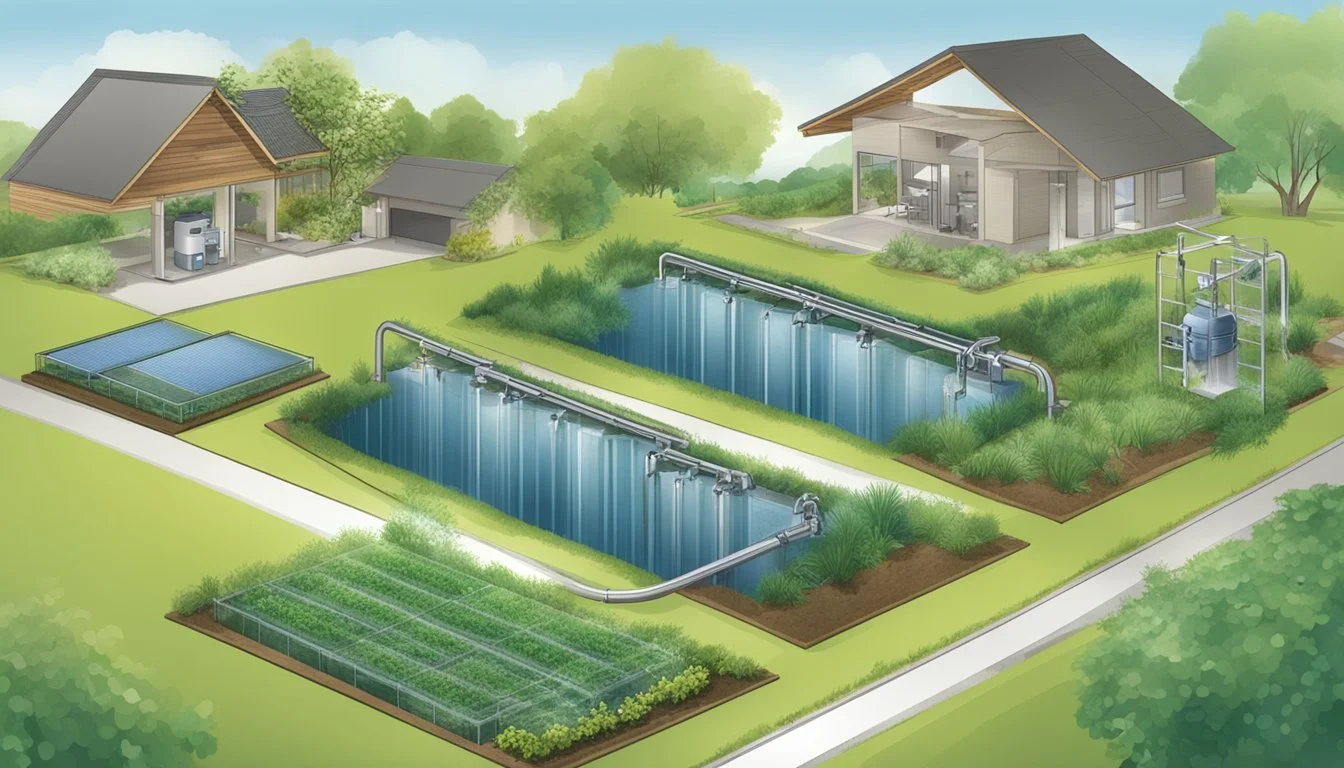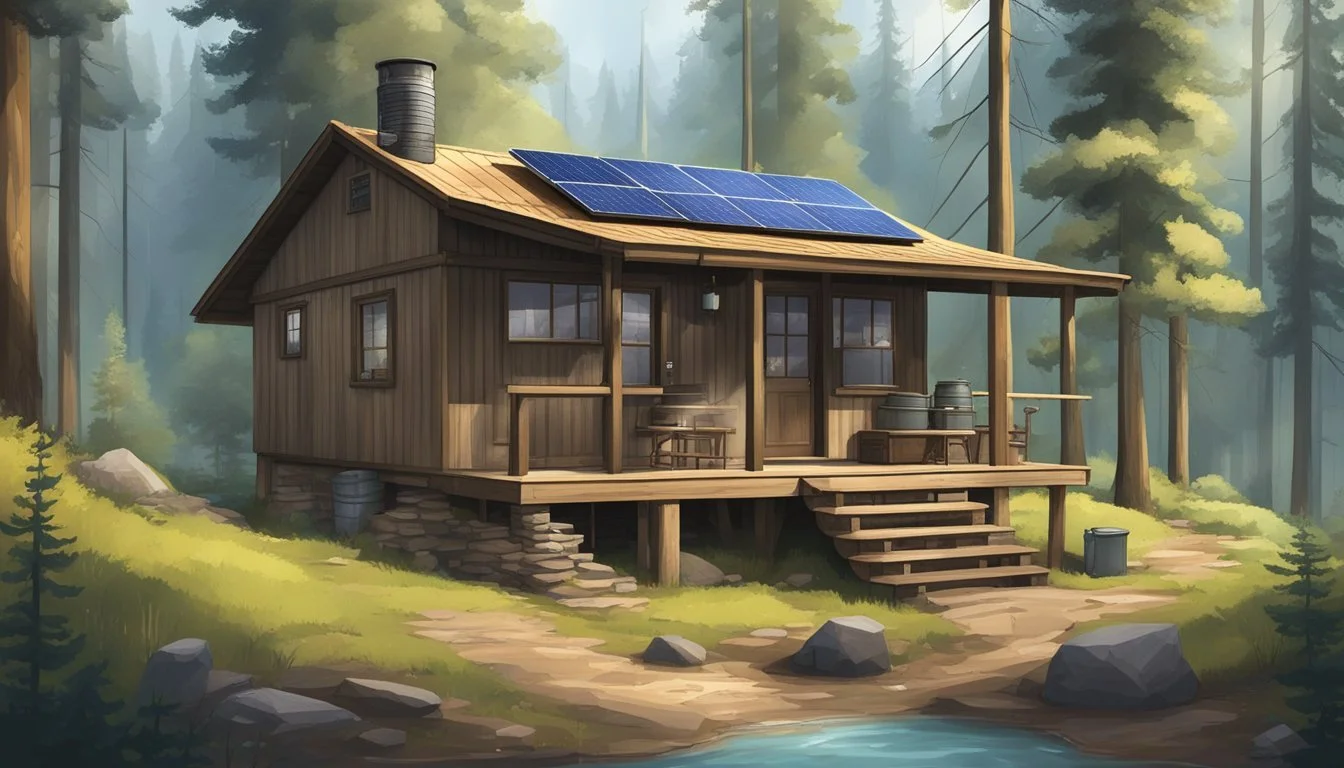Four Corners Off Grid Living
Embracing Self-Sufficiency in Remote Areas
Four Corners Off Grid Living offers a unique lifestyle opportunity in the picturesque intersection of Arizona, Utah, Colorado, and New Mexico. This region ranks among the top 10 states in the United States for off-grid living, making it an ideal location for those seeking independence and sustainability. Living off the grid here allows individuals to reduce their carbon footprint while embracing self-sufficiency.
The appeal of Four Corners extends beyond its natural beauty. This area provides a supportive environment for homesteading and off-grid living, reflected in the growing communities and resources available. From solar power setups to innovative waste management solutions, residents have various tools to live sustainably.
Families like those at Four Corners Algonquin have been cultivating their dreams on this land for decades, proving that off-grid living can be both achievable and rewarding. The region's rich history, combined with current interest in tiny homes and self-reliant lifestyles, makes it a compelling destination for anyone looking to escape the conventional.
Understanding Off-Grid Living
Off-grid living emphasizes independence and self-sufficiency, utilizing alternative resources to manage utilities and sustain daily life. Understanding its basics, benefits, challenges, and legal considerations is crucial for planning effectively.
Basics of Off-Grid Living
Living off-grid means disconnecting from public utilities such as electricity, water, gas, and sewer systems. Individuals generate their own power, often through solar panels, wind turbines, or hydroelectric systems. Water is sourced from catches, wells, or nearby bodies of water. Waste management may involve composting toilets and graywater systems.
Self-reliance is a key aspect, requiring skills in resource management and basic maintenance. Proper planning and preparation are essential to ensuring a stable and comfortable lifestyle without relying on municipal services.
Benefits and Challenges
Benefits:
Environmental Impact: Reduced carbon footprint through sustainable practices.
Financial Freedom: Lower utility costs and potential tax incentives for green energy usage.
Self-Sufficiency: Greater control over resources and reduced dependency on external systems.
Challenges:
Initial Investment: High upfront costs for setting up systems like solar panels and water collection.
Maintenance: Ongoing effort to maintain and repair self-sustained systems.
Accessibility: Ensuring access to emergency services and supplies in remote locations.
Legal and Building Code Considerations
Legal requirements and building codes vary by location and significantly impact off-grid living. Prospective off-grid dwellers must understand zoning laws, permits, and regulations related to land use and construction.
For example, some areas may have strict water rights regulations or prohibit certain types of waste management systems. Compliance with these rules is critical to avoid legal issues and ensure safety.
Additionally, property taxes may differ for off-grid properties, depending on local government assessments. Engaging with local authorities and possibly consulting with a legal expert ensures that all aspects of the off-grid setup are within legal bounds.
Selecting the Right Location
Choosing the right location is crucial for successful off-grid living. Key factors include climate and weather conditions, accessibility to essential resources, and community and social aspects.
Climate and Weather Factors
Climate plays a pivotal role in the sustainability and comfort of off-grid living. The selected location should have a climate that supports year-round activities without extreme disruptions. For example, regions with mild winters and moderate summers reduce the need for excessive heating or cooling.
A balanced climate contributes to efficient energy usage, especially if relying on solar power. Adequate sunlight is required for solar panels, whereas wind speeds are crucial for wind turbines.
Additionally, avoid areas with frequent natural disasters like floods, hurricanes, or wildfires. Stability in weather patterns ensures that growing food and accessing resources remains uninterrupted.
Accessibility to Resources
Selecting a remote area should not compromise access to vital resources. Water is one of the most critical resources, so proximity to natural water sources like rivers, lakes, or underground wells is essential. Self-sustainability is easier to achieve in areas where water is abundant and easily accessible.
For energy, evaluate options for solar, wind, or hydropower based on the geographical features of the land. The area should also provide space for agriculture to grow food, which includes analyzing soil quality and suitability for farming.
Easy access to essential supplies and emergency services is also important, even in remote areas. Consider road accessibility and the distance to nearby towns for supplies and medical emergencies.
Community and Social Aspects
Community and social elements can greatly enhance off-grid living experiences. Developing a support network with like-minded individuals or small communities can provide assistance, resource sharing, and social interaction.
Investigate the presence of any existing off-grid communities or homesteading networks in the area. These communities can offer valuable advice, practical knowledge, and sometimes share resources or labor.
Understanding local property taxes and laws is also crucial for long-term planning. Different regions have varying regulations on land use, building codes, and taxes, which will impact the sustainability and legality of the off-grid lifestyle. Being part of a supportive community often helps navigate these legal and bureaucratic challenges efficiently.
Designing Your Off-Grid Home
When designing an off-grid home, special consideration needs to be given to the choice of building materials, maximizing space usage, and integrating renewable energy sources. These elements are crucial for creating a sustainable and efficient living environment.
Choosing the Right Building Materials
Selecting appropriate materials is key to the longevity and sustainability of an off-grid home. Reclaimed wood, straw bales, and earthbags are popular choices due to their insulation properties and low environmental impact.
Brick and concrete may be used for their durability and thermal mass capabilities, retaining heat in the winter and staying cool in the summer. Cabins and tiny houses often benefit from lightweight yet strong materials like recycled steel or aluminum.
Efficient Use of Space
Maximizing the available space is crucial, especially in small homes and tiny houses. Incorporate multi-functional furniture, such as beds with built-in storage or fold-up tables.
Vertical space can be utilized for storage with wall-mounted shelves. Yurts and small cabins benefit from open-plan designs to avoid cramped interiors.
Implementing compact, efficient appliances that occupy minimal space without compromising functionality helps to maintain an uncluttered living space.
Incorporating Renewable Energy
Integrating renewable energy sources is essential for off-grid living. Solar power is a primary option, with photovoltaic panels converting sunlight into electricity.
Wind power through small turbines can complement solar, especially in windier areas. For water heating, solar thermal systems are effective and can be supplemented by wood-burning stoves in colder climates.
Installing batteries for energy storage ensures a steady power supply even when solar or wind outputs fluctuate. Using energy-efficient appliances and low-voltage lighting helps to further reduce energy consumption.
Energy Solutions for Off-Grid Living
Off-grid living demands reliable and sustainable energy solutions. This section highlights various energy sources and systems, focusing on solar energy, wind turbines, and energy storage methods.
Solar Energy Systems
Solar energy is a cornerstone for off-grid living due to its accessibility and efficiency. Solar panels can be installed on rooftops or open land, converting sunlight directly into electricity. These panels are typically paired with inverters to change the direct current (DC) produced into alternating current (AC) used by household appliances.
Maintenance is minimal, but regular cleaning ensures optimal efficiency. Solar energy is particularly effective in sunny regions and can be scaled up or down based on energy consumption needs. Systems range from small setups for cabins to large arrays powering entire homes.
Wind Turbines and Alternative Sources
Wind turbines capture kinetic energy from wind and convert it into electricity, making them suitable for areas with consistent wind patterns. Placing turbines on a hill or elevated structure maximizes energy capture. These systems are clean, renewable, and can significantly supplement solar energy.
Alternative sources like hydroelectric systems can be integrated if a nearby water source is available. Small-scale hydropower setups use flowing water to generate electricity, providing a continuous power source. Considering local geography and environmental conditions is crucial when choosing wind or hydroelectric systems.
Energy Storage and Management
Effective energy storage ensures a stable power supply. Battery storage systems store excess energy generated by solar panels or wind turbines for later use, which is essential during cloudy or windless periods. Lithium-ion batteries are popular due to their efficiency and lifespan, while lead-acid batteries offer a cost-effective solution despite their shorter lifespan.
Energy management systems help monitor and optimize energy consumption. These systems balance energy input and output, ensuring reliable electricity supply. Smart energy meters and controllers allow for real-time monitoring and adjustment, making efficient use of stored energy.
Water Management
Effective water management is crucial for off-grid living. It involves securing reliable water sources, ensuring proper filtration, and adopting efficient water usage practices.
Sources and Collection
Identifying and securing a reliable water source is the first step. Common sources include wells, nearby bodies of water, and rainwater harvesting. Wells can provide a consistent water supply but require a pump, which may be powered by solar or wind energy.
Rainwater harvesting involves collecting water from rooftops and storing it in tanks. This method is particularly useful in areas with frequent rainfall. Collecting water from nearby streams or lakes also offers a viable option, although it's essential to ensure that the water is safe and legal to use.
Filtration and Purification
Ensuring that collected water is safe to drink involves several methods. Filtration systems can range from simple sand filters to advanced multi-stage systems that remove impurities. A common approach is using ceramic filters, which are effective in removing bacteria and particulates.
Boiling water is an age-old method to kill pathogens. UV purification systems also offer a modern, energy-efficient solution, ideal for off-grid setups. Treating water with chemical disinfectants like chlorine or iodine tablets is another effective method, especially for emergency use.
Efficient Water Usage
Efficient water usage ensures that your water supply lasts longer and reduces waste. Implementing low-flow fixtures in sinks, showers, and toilets can significantly cut down water usage. Collecting greywater from sinks and showers for irrigation purposes is another effective strategy.
Practicing mindful water use—such as taking shorter showers and fixing leaks promptly—can conserve valuable water. Drip irrigation systems for gardens use less water compared to conventional methods by delivering water directly to plant roots, reducing evaporation and runoff. Adopting these practices helps sustain a reliable and clean water supply.
Food and Agriculture
Four Corners off-grid living emphasizes self-reliance through sustainable food production methods. Key aspects include growing diverse crops, raising various livestock, and employing effective food preservation techniques to ensure year-round food availability.
Growing Your Own Food
Cultivating a vegetable garden is a central activity for off-grid living, ensuring a steady supply of fresh produce. Key crops often include beans, tomatoes, and squash due to their nutritional value and ease of cultivation. Heirloom varieties are particularly favored for their resilience and taste.
Using a greenhouse can extend the growing season and protect crops from harsh weather. Soil quality plays a critical role; enriching the soil with compost and natural fertilizers enhances productivity. Crop rotation and regenerative agriculture practices help maintain soil health and boost yields over time.
Raising Livestock
Livestock, such as chickens, goats, and rabbits, provide a valuable source of protein and other nutrients. Chickens are popular for their eggs and meat, requiring minimal space and relatively simple care. Goats can supply milk, cheese, and meat, while also helping to manage vegetation.
Proper housing, regular feeding, and maintaining hygiene are critical for animal health. Integrating livestock with crop production through methods like silvopasture can optimize land use and enhance sustainability. This combination also promotes biodiversity, contributing to a balanced ecosystem on the farm.
Food Preservation and Storage
Effective food preservation is essential for year-round access to homegrown produce. Common techniques include canning, drying, and fermenting. Canning involves storing fruits and vegetables in sterile containers, extending their shelf life for months.
Drying herbs and fruits using solar dryers or ovens can also keep produce edible through the off-seasons. Fermenting foods like pickles and sauerkraut not only preserves them but also adds nutritional benefits through probiotics.
Proper storage solutions, such as root cellars and airtight containers, help in maintaining the longevity and quality of preserved foods. Employing these methods ensures minimal waste and reliable food supplies even during challenging conditions.
Waste Management Strategies
Effectively managing waste in an off-grid setting is vital for maintaining environmental sustainability and personal health. Key strategies include composting solutions and recycling practices to minimize waste.
Composting Solutions
Composting is a cornerstone of off-grid waste management. Using composting toilets can significantly reduce water use and produce valuable compost for gardening. Solid waste, including kitchen scraps and yard waste, can be composted to create nutrient-rich soil.
Implementing a three-bin system helps manage different composting stages:
Fresh waste
Partially decomposed waste
Finished compost
Using proper techniques ensures efficient breakdown and avoids attracting pests. Maintaining the right balance of green (nitrogen-rich) and brown (carbon-rich) materials is essential. Aerating compost piles by turning them regularly promotes decomposition and prevents unpleasant odors.
Recycling and Minimizing Waste
Minimizing waste through the 3Rs: Reduce, Reuse, Recycle is crucial. Off-gridders can reduce waste by embracing minimalism, buying in bulk, and choosing products with minimal packaging. Reusing items extends their life and reduces the need for new products.
Recycling involves sorting materials like plastics, metals, and paper. Establishing a dedicated area for recyclables helps keep the living space organized. Items such as glass jars and metal cans can be cleaned and repurposed for storage or other uses.
Prioritizing non-disposable products, such as cloth bags and refillable containers, further reduces waste generation. Disposal of non-recyclable and hazardous waste should be done responsibly, potentially involving special collection services or trips to designated facilities.
Maintaining an Off-Grid Lifestyle
Maintaining an off-grid lifestyle requires daily attention to various aspects such as handling utilities and preparing for extreme weather. Establishing a supportive community also plays a crucial role.
Daily Living and Convenience
Living off-grid, daily routines require adjustments to ensure convenience. Energy sources, like solar panels and wind turbines, need regular maintenance to function efficiently. Water systems, including rainwater collection and purification, need constant monitoring.
Sustainable living means using energy-efficient appliances. Refrigerators, heaters, and cookers should be chosen based on their power consumption and compatibility with alternative energy sources. Routine checks on tools and backup systems ensure smooth operation.
Dealing with Extreme Weather
Extreme weather poses unique challenges. Effective heating and cooling systems, such as wood stoves and solar-powered fans, are essential for balancing temperatures. Insulating buildings and using weather-resistant materials can mitigate weather damage.
Backup power sources, like generators, provide necessary energy during prolonged cloudy or windless periods. Preparing for water shortages involves having water storage solutions and purification methods ready.
Building a Supportive Community
A supportive community enhances off-grid living by sharing resources and knowledge. Establishing connections with neighbors means access to shared tools and collaborative problem-solving.
Participating in local events can lead to stronger bonds, and sharing surplus produce or skills fosters cooperation. A close-knit community can be crucial in emergencies, offering assistance and infrastructure support.
Technological and Infrastructure Integration
Technological advancements and infrastructure improvements are pivotal in enhancing the quality of life for off-grid communities. The effective integration of internet and communication systems and transportation access ensures connectivity and mobility for residents in remote areas.
Internet and Communication
Reliable internet and communication systems are essential for off-grid communities. Mesh networking offers a robust solution, enabling a network of devices to share internet connectivity even in isolated regions. Another option is cellular data solutions, which can provide internet access where traditional broadband is unavailable by utilizing cell phone data plans.
Starlink, via its satellite network, also provides high-speed internet to remote areas, ensuring low latency and broad coverage. This facilitates not only personal and emergency communication but also supports remote work, online education, and access to vital information. By leveraging these technologies, off-grid homes can maintain connectivity akin to those within urban infrastructures.
Transportation and Access
Transportation and access are crucial for off-grid living. Solar-powered vehicles are gaining traction, offering a sustainable mode of transport. These vehicles rely on solar energy systems, making them ideal for remote areas where traditional fuel sources are scarce. Additionally, all-terrain vehicles (ATVs) are invaluable for navigating rough terrains common to off-grid environments.
Improving road infrastructure is also vital. Well-maintained dirt roads can significantly enhance access to and from off-grid homes, ensuring consistent supply lines for food, medical supplies, and other essentials. Community-driven road maintenance initiatives and partnerships with local authorities can help maintain these access routes. Efficient transportation solutions enrich the livability and resilience of off-grid communities, ensuring that they remain connected and accessible.
Economic Considerations
Off-grid living requires individuals to manage unique financial challenges, including substantial upfront investments and ongoing costs for self-sufficiency. Understanding these economic factors is essential for a sustainable lifestyle.
Budgeting and Managing Finances
Effective budgeting is crucial for those considering the off-grid lifestyle. This begins with accounting for the initial investment needed for land, building materials, and essential equipment such as solar panels and water collection systems.
Monthly expenses also play a pivotal role. Even though there are no traditional utility bills, costs related to maintenance and replacement parts can accumulate. Budgeting for unexpected repairs ensures financial stability.
Moreover, property taxes must be considered. While some areas may have lower property taxes, this can vary greatly by location. Managing finances also involves staying informed about any available tax credits and financial incentives that can reduce costs.
Understanding the Cost of Independence
The investment in alternative energy sources, like solar or wind power systems, is significant but essential for energy independence. For example, installing an off-grid solar system can range from $15,000 to $30,000 or more. Wind turbines might cost between $30,000 and $50,000, depending on size and complexity.
Water systems are another area of expense. Setting up a rainwater collection and filtration system involves initial costs but ensures a reliable water supply. Composting toilets and greywater systems also require upfront and ongoing investments.
While these costs are substantial, they offer long-term benefits, including self-reliance and reduced monthly expenses. Understanding these financial commitments helps prepare for a smoother transition to a more sustainable and self-sufficient off-grid lifestyle.
Navigating Local Regulations
Understanding and complying with local regulations is crucial for anyone considering off-grid living. Key areas of focus include zoning and property laws, as well as environmental controls and their impacts.
Zoning and Property Laws
Local zoning laws govern the use of land and the types of structures allowed on it. These can vary significantly from one jurisdiction to another. Prospective off-grid homeowners must ensure their chosen land is zoned for residential use and that the structures they plan to build comply with local building codes.
Setback requirements, property taxes, and utility regulations are also part of zoning considerations. It's essential to check how far the home should be from property lines and other buildings. Unauthorized constructions can result in fines or forced modifications. Conducting thorough research on local laws will prevent legal issues and costly adjustments later.
Environmental Laws and Impact
Environmental laws address the impact of building and living off-grid on local ecosystems. Regulations may dictate how natural resources such as water and vegetation are managed. Builders might need permits for water use, waste disposal systems, and energy sources.
Impact assessments could be required to ensure that the construction doesn't harm local wildlife or lead to soil erosion. These laws aim to preserve the natural environment while allowing sustainable living practices. Staying informed about these legal requirements helps support sustainable development and protects the environment.
Navigating these legal landscapes successfully ensures compliance with regulations and promotes harmonious coexistence with nature. Thorough preparation and adherence to these laws will facilitate a smoother transition to off-grid living.
Long-Term Sustainability
Four Corners Off Grid Living focuses on sustainable living practices that ensure minimal environmental impact while maintaining a high quality of life. This section highlights advancements in renewable energy systems and showcases successful case studies that demonstrate sustainable living.
Renewable Energy Advances
The use of renewable energy systems has been pivotal in reducing the carbon footprint of off-grid living. Solar panels, for instance, have seen significant advancements, becoming more efficient and affordable. Residents in regions like New York and Oregon have adopted these technologies to harness solar power effectively.
Wind turbines also contribute to energy independence, especially in areas with consistent wind patterns. Technologies like micro-hydro systems and biomass energy further diversify the renewable resources available to off-grid homesteaders. Continuous innovation in these fields drives sustainability by providing reliable and clean energy.
Success Stories and Case Studies
Several communities have successfully implemented sustainable living practices. One example is the Kovcheg community in Russia, known for its commitment to self-sufficiency and environmental harmony. They produce their energy and food, showcasing a model for others to follow.
In New York, small homesteading groups have integrated community gardens with renewable energy setups, creating a balanced, self-sustaining lifestyle. Similarly, in Oregon, off-grid homeowners have retrofitted their properties with green technology, reducing their reliance on conventional energy sources. These success stories illustrate the practical benefits and viability of sustainable living.














